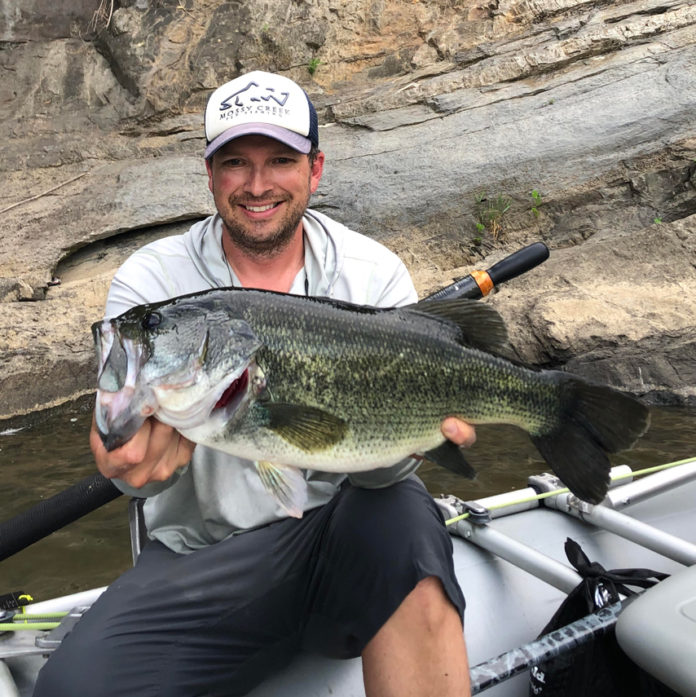Written by: Evan Jones
All photos courtesy Colby Trow
Largemouth bass are present in catchable numbers in every state but Alaska, and they are the primary drivers of the multi-billion-dollar fishing tackle industry. But the experience of fly-fishing for bucketmouths isn’t the same everywhere, so tactics that work in the Everglades, for instance, may not be the best choice for a Minnesota lake or a Texas river. (But then again, they just might.) To better understand regional differences in largemouth fishing, we’ve launched a series in which Orvis-endorsed guides explain how they tailor their tools and techniques to better fit local conditions. Hopefully this information will be useful not only for anglers in each region, but also for bass anglers across the country who are seeking a more comprehensive understanding of Micropterus salmoides.
This week, we look at Virginia, which is home to both native and introduced populations of largemouths. It’s one of the few states that offers year-round opportunities to catch this popular game fish. We recently sat down with Mossy Creek Fly Fishing co-owner/operator Colby Trow, who has devoted a great deal of time to targeting big bass on the fly in the Shenandoah Valley and beyond. He was kind enough to answer a few questions, and to show us a few of his favorite local fly patterns, as well (complete with video tying instructions).

1. What is the seasonal timing for largemouths in Virginia?
We can catch largemouth bass year-round here in Virginia. Even in the dead of winter, we’ll still have days of 60- to 70-degree weather down in the tidewater area, and bass can still be feeding rather aggressively under those conditions. In the more mountainous region of the state, where our operation is located, we have a more seasonal fishery that is typically limited to warmer months. Our rivers tend to be colder than the nearby ponds and lakes, and the Shenandoah River runs even colder than most. As a result, we often see the timing of the largemouth spawn there pushed back into May or even June (especially during high water years), while most lake bass will usually start in early April and be done by May. The timing of the spawn is important, since your best chance to catch a big largemouth is right before it begins, while the post-spawn period into summer is when most anglers are targeting and catching largemouth.
2. What are some of your favorite local fly patterns or variants?
The CK Baitfish, the Clawdad, and the Trow Tube Fly are three of the more productive flies we use locally, which is why our shop created instructional videos for tying each one. [Click the fly names above to see the videos.] When selecting flies for largemouths, remember that, unlike picky trout, big bass will often be tempted by bigger offerings. We use 4- to 5-inch-long Clawdads tied on a 4/0 Orvis pike hook for the largest fish we target. CK Baitfish and the Trow Tube in the 3- to 5-inch-long range are also popular. Topwater deer hair bugs, Game Changers, diving frogs and a variety of swimming minnows are also good options.

3. Describe some of your more productive special techniques or approaches.
I have been specifically targeting larger bass over the past few years with good success. Oversizing gear has helped: without it, large and heavy flies can be a burden to cast, and big fish can take you under sharp ledges or deep into deadfalls. I have been fishing 10- to 11-weight rods with a minimum of 20-pound-test tippet to reduce break-offs, particularly on fish over five pounds. I also scout the water frequently to locate the biggest bass. I spend a lot of time running up and down the river systems, focusing on casting near the deadfalls, timber piles, ledges and rock piles. Once I locate the big fish, I approach the area slowly and cover water methodically until I get a bite. It takes time and effort to be successful catching the biggest largemouth here, but like anything, it can be very rewarding when it all comes together.
Evan Jones is the assistant editor of the Orvis Fly Fishing blog. He lives in Colorado.
Credit: Source link































